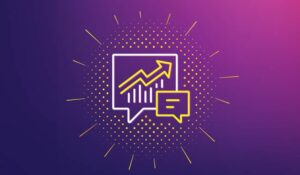Picture the scene: you’re running a mid to large contact centre. Your Marketing Director wants a faster response to your marketing campaigns and would like you to produce hourly reports to their team.
Your product directors want to know how many times your competitors are mentioned in your conversations.
Your training and development people want you to report on the frequency of mistakes during a call, so that they can reinforce training to the right people, and your CEO is looking at ways of pruning your budget, starting with your operations and reporting teams.
Make no mistake about it, with the economic downturn every company will be looking at their contact centre in one of two ways.
The first way is drawing the contact centre further into the business, valuing it as an insightful tool to understand customer behaviours.
This will undoubtedly put a strain on your ability to produce reports on all kinds of aspects of your contact centre that you might not have considered before.
The other way is looking to cut costs while maintaining the same level of service. To be honest, most companies will be looking to do both.
Speech analytics blows the lid off of these requirements. It enables a business to deliver insight into the conversations in a much faster and proactive way.
It can provide simple insights such as categorising a call based on the words used all the way through to identifying customers that may potentially churn, allowing you to give them a more personalised service.
Typical Uses For Speech Analytics
The applications of speech analytics in call centres can be varied, but generally speaking have evolved into five main areas:
- Streamlining business processes
- Improving agent performance
- Improving the customer experience
- Increasing market intelligence
- Monitoring compliance
To better illustrate how speech analytics can be applied to each of these areas, the next section will describe actual business use cases where companies have achieved tangible results with speech analytics in each area.
Large-volume contact centres record many thousands of hours of audio/day which contain invaluable customer interaction data.
This core ‘voice of the customer’ data, once analysed and understood, can provide organisations with the accurate, detailed information on which to make vital business improvements.
However, a speech analytics solution must be able to process large volumes of recorded data at high speeds and with a proven level of accuracy for it to be of any commercial value.
Streamlining Business Processes
Streamlining business processes to improve operational efficiency and reduce costs can take the form of:
- Improving first-call resolution rates (FCR)
- Reducing average handle times (AHT)
- Repairing broken processes
Improving First-Call Resolution Rates
One of the most-watched metrics in the modern call centre is that of first-contact resolution, or FCR.
Improving the FCR rate, providing a satisfactory solution to a customer’s problem within their first call, is a key contact centre performance metric for two reasons:
- Each subsequent call increases the cost of providing that solution
- Additional calls tend to lower customer satisfaction
A variety of factors, including company policies and procedures or ineffective call-handling tools, may be limiting the agent’s ability to close issues efficiently.
But whatever the cause, effective use of speech analytics allows the call centre to easily identify the major factors that drive repeat calls, and implement steps to solve this problem.
Reducing Average Handle Times
A dramatic change in the average time it takes to handle each call can be an early warning of something unexpected or unusual taking place in the contact centre.
Temporary, predicted increases in average handle time (AHT) associated with new procedures, product releases, pricing changes and so on, can usually be offset by staffing adjustments or training sessions.
But when AHT rises unexpectedly, and remains elevated, it is important to get to the core reasons for the rise and make adjustments accordingly.
Root-cause analysis can show the specific call drivers driving each type of call and highlight the AHT for each driver.
It is then possible to drill down to the relevant calls to determine what is causing the increase and where to apply additional training, staffing changes, procedural adjustments and so on, to effect the greatest improvement.
It is equally critical to understand how specific agents are performing on increased-AHT calls.
With key reports you can quickly and effectively investigate AHT for specific work groups and agents, so that you can focus your efforts on modelling the techniques of successful agents and using them to train others, as well as identifying agents who may need additional coaching or reassignment.
Repairing Broken Processes
Root-cause analysis can highlight underlying process problems. It can also quantify the number of times that a broken process happens. This can be particularly useful to help prioritise action work and to help with building a business plan for new resources.
Efficiency
- Large savings in terms of staff time can be made when it comes to analyzing and assessing calls with far more reliable and superior results
- Identification of individual agent training needs
- Swift and easy set up of campaigns
Increasing sales
Driving sales through service
Highly effective sales through service strategies are being created by building up a series of words and phrases that identify a successful sale. Call data is then mined to recall all the successful conversion calls in a given sample.
Overlaying this with demand or process types can demonstrate not only which demands are most likely to result in a conversion, but it also measures how long it takes.
This is helping clients to build sales strategies that satisfy the customer without ‘fatiguing’ them, even increasing loyalty and brand promotion, whilst giving FTE savings by only targeting specific call types.
In turn, speech analysts and team leaders are identifying best sales practise and using this insight to coach employees to more effective and crucially efficient sales success.
Improve Up-Sell Results
For many companies, every customer contact is an opportunity to ‘up-sell’ the customer. For contact centres whose primary function is sales, successful up-selling can significantly improve the return on investment in marketing, infrastructure and agents.
As with other performance factors in the contact centre, there are multiple components to measure and tune in order to improve up-sell results.
Knowing if agents regularly attempt to up-sell, evaluating the quality and timing of these attempts, and identifying agents who are repeatedly unsuccessful provides valuable insight.
Improving Agent Performance
100% Quality Monitoring to Reduce Agent Turnover
Many companies spend thousands of pounds hiring and training contact centre agents only to see them leave at an unacceptable rate.
The typically high attrition rate in the first 90 days of employment not only costs the company in terms of money invested, it is also costly in terms of reduced customer satisfaction, as customers encounter inexperienced representatives every time they call.
Although agents leave for a variety of reasons, studies indicate that lack of training and coaching is a major factor.
With supervisors only able to monitor two to ten randomly selected calls a month per agent, there is no consistency in the types of calls monitored and no weight of data to enable true insight into agent behaviour.
This makes it difficult to identify specific behaviours associated with certain types of calls that might be negatively impacting agent performance.
Without that information, targeted coaching to improve success is very limited, if possible at all, and the agent becomes discouraged, ineffective and at risk of attrition.
Speech analytics provides the level of insight and in-depth understanding of 100% agent performance essential for targeted coaching.
Detailed knowledge of categorising calls by driver, and drilling down into call content for specific performance components enables the supervisor to focus on specific areas by agent.
This provides targeted individual training programmes that assist under-performing agents, providing them with tools for success.
Monitoring of the whole telephone conversation with your customers
- Evaluation of the call quality for entire campaigns at the click of a button
- Clear and comparable results due to the standard evaluation criteria
- Transparency of conversations reassures and protects you and your clients
- Methodical analysis of each call leads to recommendations for enhancements to not just what was said but how it was said to the customer
- Increased customer satisfaction and loyalty through continuous improvement and high quality conversations
Changing Contact Centre Cultures
The most far reaching way speech analytics insight is being utilised is to change entire contact centre cultures. By mapping customer journeys through speech categories, clients are able to build and focus new processes on customer needs by using the voice of the customer.
Introducing performance measures, coaching and training on the back of intelligence identified by analysts, entire change programmes are being delivered to drive not just good but great customer service.
This is being done by incorporating the voice of the customer data into everything they do; quality, process measurement, root cause identification and dissatisfaction analysis.
These programmes are being delivered quickly and effectively because of the flexibility speech analytics gives in measuring the context of calls.
It’s the speed to deliver context and data that’s making a real difference to organisations that are embracing speech analytics and using it to drive their improvement programmes.
Insight that would have taken weeks and a vast amount of resource to produce and validate is being produced with far greater reliability and speed, allowing contact centre managers to respond and change as quickly as their customers’ do, irrespective of size.
An increasingly common comment is that they don’t know how they managed to work for so long without it.
Focusing on Driving Quality by Majority Not Exception
Another way speech analytics insight is improving customer service is by creating a quality shift not just with a small number of lower performing employees, but by concentrating on uplifting the quality of 70%+ of the call taking population – it’s moving average to new heights.
The ability to analyse employee behaviour throughout the entire sample base in one snapshot is giving quality and training teams a volume of data previously unknown.
They’re able to develop and target coaching strategies that use examples of best practice calls to deliver training that instantly lifts customer satisfaction en mass.
Clients that have used speech in this way have not only seen increased customer satisfaction but often as a by-product see their call volumes reduce and their handle times shorten by giving employees the training and confidence to deal with demand types well.
Improving the Customer Experience
Reducing Customer Dissatisfaction
Customer service is measured by customer satisfaction. But measuring customer satisfaction may not be as straightforward as surveying customers about their satisfaction levels.
Neither can it always be captured in statistics related to key performance indicators (KPI) performance. Customer satisfaction is a very fluid measure, easily impacted by the most recent experience with your contact centre.
Proactive analysis and strategies for handling and reducing dissatisfaction will help keep it from becoming systemic.
Speech analytics can categorise 100% calls by root cause. These may include product failure, a missed call-back commitment, incorrect billing, poor product/service quality, lack of knowledge/information or wrongful service termination.
Targeted improvement initiatives can be developed on the basis of this intelligence to enable unhappy customers to be turned into loyal constituents and positive references.
Customer Retention
Customer retention is central to profitability for all organisations, especially subscription-based service companies.
Acquiring new customers is costly, and payback is typically earned over a period that exceeds the initial term of service.
With growing competition in many industries, customers have become wary of being locked into long-term contracts, so it is often necessary to offer services on a month-to-month basis.
Further, customers have become savvy about ‘shopping’ for deals, by threatening to terminate service or move to another provider, or challenging their current provider to match or beat a competitive offer.
Analysis by a speech analytics solution enables you to spot missed opportunities, gauge customer reaction to special offers, and compare the results of various retention strategies, so that you can make informed pricing adjustments and tune agent training for the highest and most profitable rate of customer retention.
Reshaping the Call Demand Landscape
Demand landscapes have traditionally been built up using a series of IVR and manual demand capture data. There are multiple systems involved and often multiple resources manipulating this data but with one huge drawback; it’s only giving one reason for each call.
Speech analytics is delivering to organisations a complete and accurate baseline of demand types.
It’s able to challenge and reshape preconceptions of why customers call because it’s not just recording the single subjective reason for the call but all of the reasons why a customer is calling and putting a handle time figure on each demand type rather than working with the average.
Some calls are always quicker than others but through speech analytics, our clients are now forecasting with more granularity than ever.
Increasing Market Intelligence
Companies spend millions of pounds annually for market research with their customers.
These programmes take many forms, from customer satisfaction surveys to product tests in focus groups, but their overall goal is the same: to provide market intelligence which companies can use to help make business decisions on products and other company processes.
Speech analytics is opening a whole new method by which companies can gain this market intelligence, and do so with data that is both more quantifiable and lower in cost.
Any company that has a call centre has access to millions of hours of the ‘voice of the customer’ and with the appropriate speech analytics software can mine this content to supplement, or even replace, its traditional market research tactics.
Speech analytics provides many benefits when compared to traditional market research:
- It is more quantitative and verifiable. Rather than the random sampling method common in traditional research, speech analytics can be applied across 100% of recorded calls for a company to gather data from the broadest source possible.
- It is timelier, with reports that can be delivered on a daily basis, or even multiple times per day, compared to traditional research which may be delivered weeks after it is collected.
- Data is gathered from actual customer interactions, rather than from a customer’s recollection of the interaction at a later date. As a result, the data is more likely to be in context and less subject to later “thought filtration” by either the customer or the data gatherer.
For all of these reasons, the data provided by speech analytics is becoming a critical component of how companies gather and act on their market intelligence.
Monitoring Compliance
Call centres are coming under increasing scrutiny and government regulations to maintain adequate standards of behaviour and practice.
Whether it is health insurance companies who must comply with privacy restrictions or collections departments and banks that work under the auspices of the Financial Services Authority (FSA), many call centres are faced with the need to maintain strict compliance with expected practices or face consequences ranging from severe financial penalties to full criminal prosecution and loss of business.
Speech analytics provides a cost-effective way to ensure that agents perform according to these expectations.
This insures against potential liability and provides a mechanism to help train and improve agent performance in these challenging situations.
- 100 % validation of contracts concluded on the telephone
- 100 % validation that vital information is shared with the customer preventing disputes and call backs
- Verification and documentation of essential statements within the conversation which is particularly important for financial services
- Compliance with laws and regulations on a call by call basis can be proved
Managing Vendors More Effectively
Sometimes a customer experience can be delivered, in part, by a third party, such as an outsourcer. Speech Analytics can be used to track calls, isolating and identifying relevant customer feedback.
Example: a leading consumer electronics provider discovered that customers were confused about whether to contact their own support line or that of their service provider partner. Root-cause analysis further revealed that calls were being routed inappropriately by agents themselves.
Result: the issue could be addressed immediately and the company provided guidance to its agents, improving its customer service.
With thanks to the following people for sharing their thoughts and experiences for this article:
- Jonathan Wax, VP EMEA at Nexidia
- Jonathan Slobom, Sales and Marketing Director of itCampus
- Samantha Richardson, Voice of Customer Consultant at Verint Systems
For more information on the typical uses for speech analytics, read these articles next:
- Speech Analytics In Marketing
- Speech Analytics in Debt Collection
- Speech Analytics in Customer Service
Author: Jonty Pearce
Reviewed by: Hannah Swankie
Published On: 14th Mar 2010 - Last modified: 11th Sep 2025
Read more about - Technology, itCampus, Jonathan Slobom, Jonathan Wax, Nexidia, Speech Analytics















